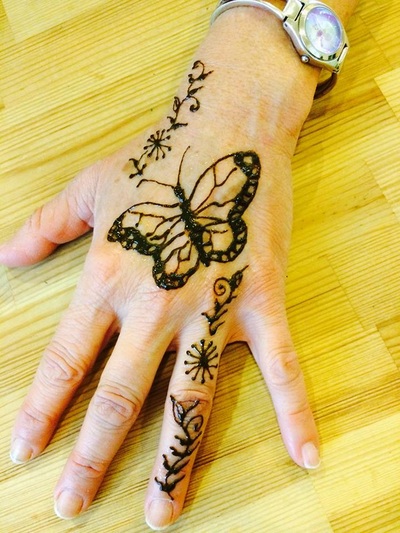How many monarch butterflies did you see during the summer of 2014? Most people in Michigan and the rest of the Midwest would answer, “Fewer than ever before.” That is true, but they may not know why. In fact, their dwindling numbers are closely related to unsustainable activities and practices of humans. Did you know that the activities and practices that are killing butterflies also contribute to the rapidly accelerating climate change we are experiencing?
At the workshops each year, other participants and I experience a roller coaster of thoughts and emotions. I feel despair in response to the stories of severe damage already inflicted on Earth. For example, at our October 2014 workshops we learned the stories of the people of the Maldives whose homeland is being enveloped by rising oceans caused by climate change. Yet, the presenters’ and attendees’ stories about collaborative effort to find more sustainable ways of living gave me hope that we can change our ways. The presenters and attendees came from diverse, yet interconnected, fields including agriculture, energy, architecture, water preservation, and more. Our varied backgrounds help us to approach the problems we face in holistic ways.
During each of my visits to Omega Institute over the past eight years, I have gotten a henna “tattoo" of a butterfly on my hand. I chose the butterfly because butterflies, especially monarchs, are special in my life. (See Blog Entry #2 October, 2, 2010.) The henna butterfly reminds me of the inspiration I carry from Omega each year, and it was particularly fitting for 2014.
As usual, people at the meeting saw my hand asked, "What is that? Why a butterfly?” My response: It is one of our "caged canaries in the cave"[1] in the midst of severe climate change. Many die through exposure to unusually cold temperatures in their winter home in Michoacán, Mexico. Others die because extensive illegal cutting of timber has destroyed their habitat in Mexico. Additionally, they die from exposure to pesticides in fields as they travel from Texas to the Midwest United States and Ontario. Moreover, monarchs lay their eggs on the underside of milkweed leaves, and milkweed has been cut down to make way for massive fields of single crops (monoculture) across the United States.
Skip Backus, CEO of Omega Institute and founder of the Omega Center for Sustainable Living (OCSL), closed our final session on October 26, 2014 by reminding us that we must take action at home, working for sustainability according to our unique interests and talents. He added that someone had given him a handful of milkweed seeds the preceding day, and he had planned on going to plant them for the monarchs. I plan to plant some milkweed too, and I hope others will join us.
To learn more about the challenges we face and actions each of us can take to live more sustainably, please visit http://www.eomega.org/online-workshops/where-we-go-from-here#-workshop-description-block to view presentations from Omega’s 2013 “Where we go from here” sustainability conference as well as the 2015 "Building the Collaborative Commons" sessions. In keeping with its mission of sustainable living, Omega offers access to the video recordings without charge.
As we continue to educate ourselves, each of us must help others learn about the challenges we face and ways we can make a difference. We must tell our stories of the Earth and those who share the Earth (butterflies and all lives, whether people, trees, plants, or animals)!
To learn more about the life cycle of the monarch butterfly and for information about an engaging film about the monarchs entitled “Flight of the Butterflies,” visit http://www.flightofthebutterflies.com/life-cycle/ .
Copyright©2014 by Paulette L. Stenzel for text and photos.
[1] Allusion to caged canaries (birds) goes back to days when workers carried birds into mine tunnels. If dangerous gasses such as carbon monoxide were present, the gasses would kill the canary before killing the miners, thus giving the miners warning that they must leave the mines immediately.




 RSS Feed
RSS Feed